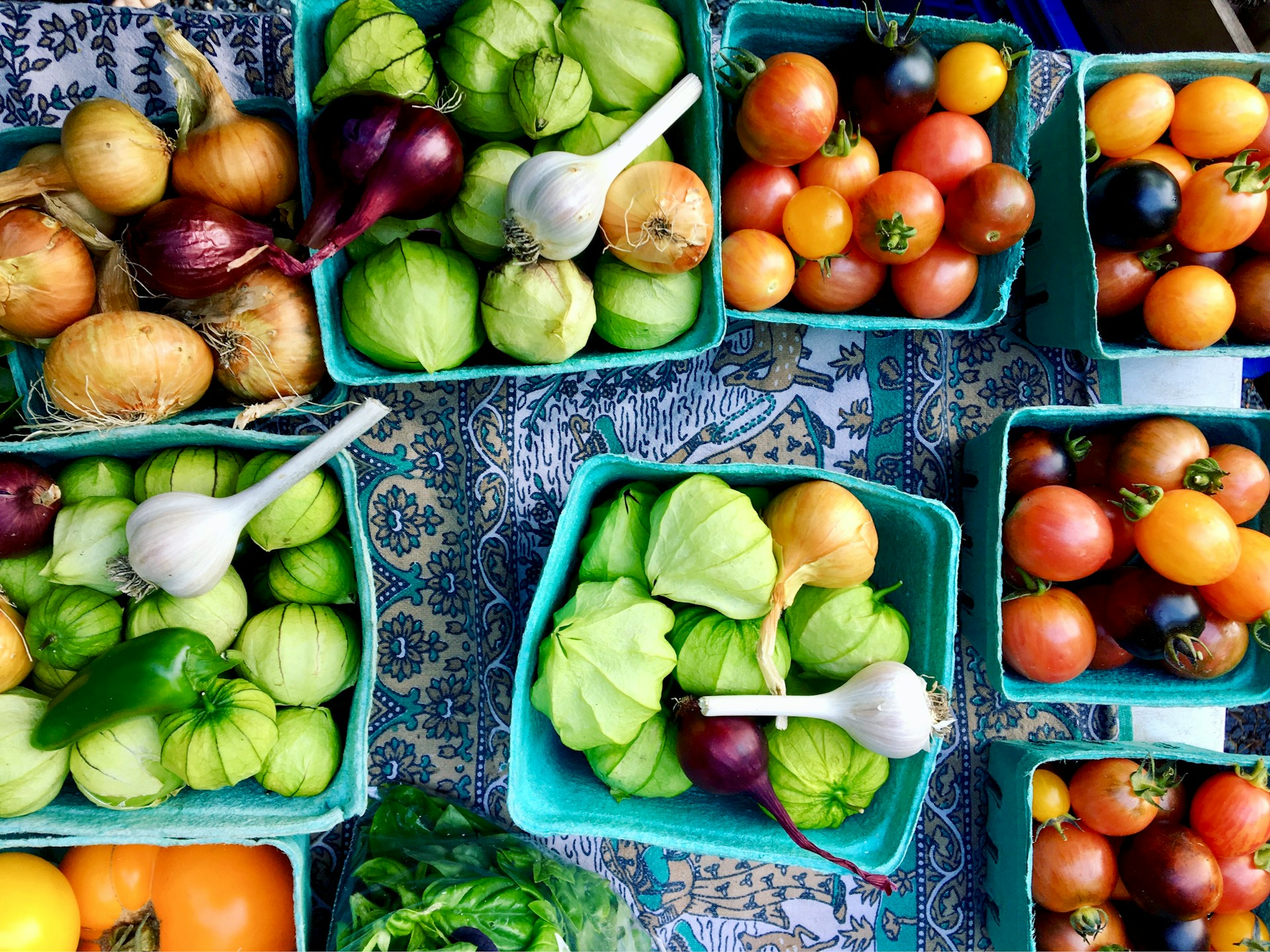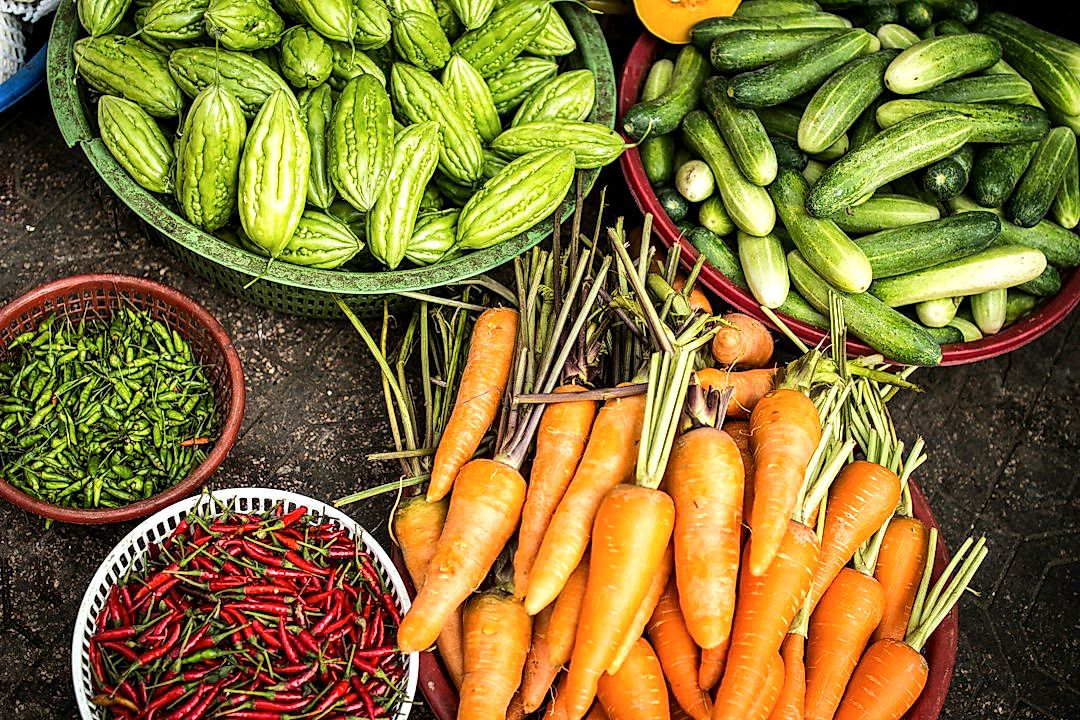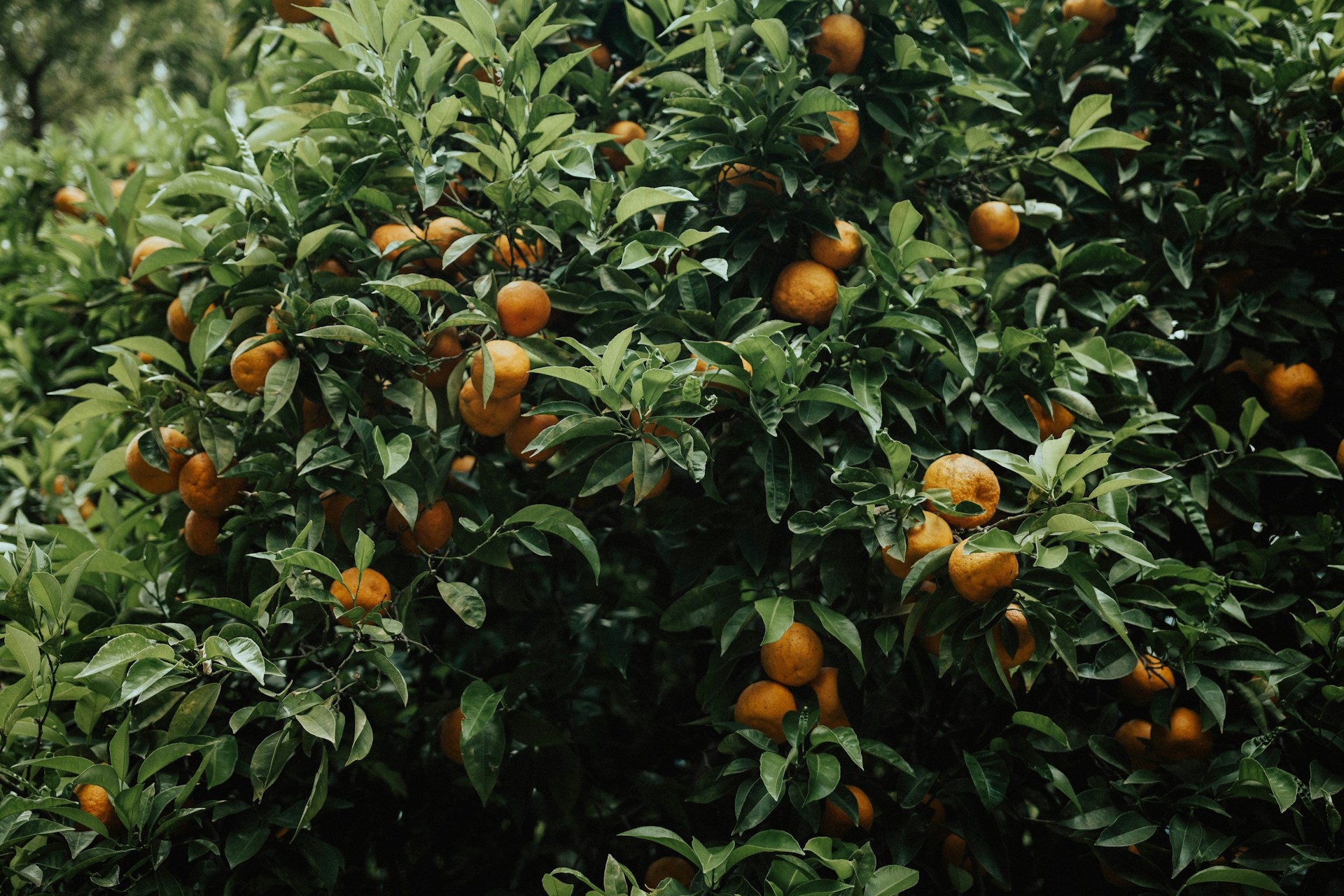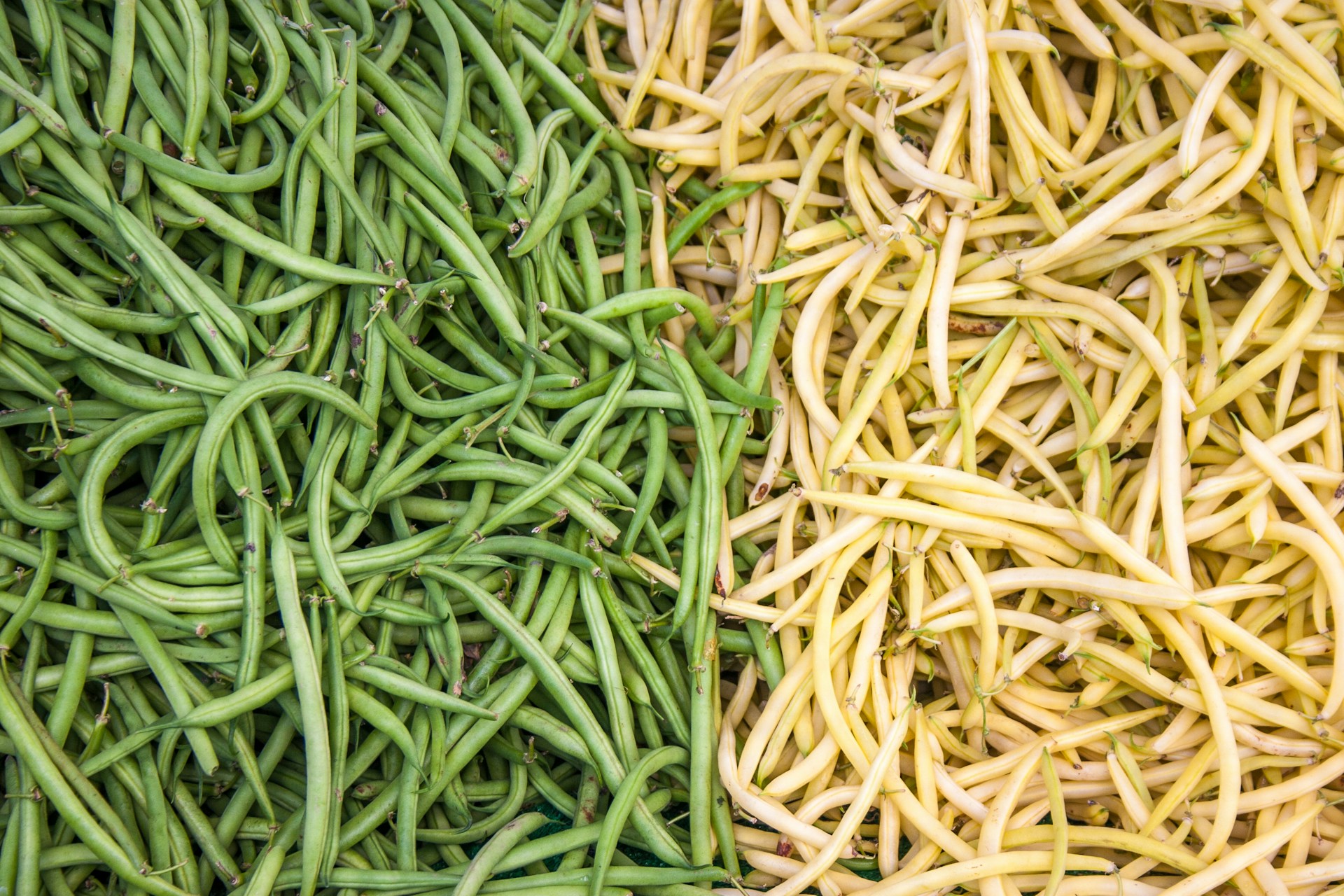The constant evolution of the packaging industry has seen a surge in eco-friendly solutions tailored to meet market demands while minimizing environmental impact.
A significant market segment that has gained attention in recent times is produce distribution.
This emphasis reflects a broader sustainability commitment and the need for a greener supply chain.
This blog article spotlights some groundbreaking developments in this domain.
It evaluates how these advancements are enhancing the efficiency and environmental sustainability of produce distribution.
It also provides in-depth insights into how these innovative packaging strategies could revolutionize this sector globally.
Contents
- Sustainable Packaging Innovations For Produce Distribution
- 1. Biodegradable Mushroom-Based Packaging
- 2. Edible Water-Soluble Seaweed Packaging
- 3. Compostable Cornstarch Packaging
- 4. Recyclable Corrugated Cardboard Boxes
- 5. Plant-based biodegradable plastic bags
- 6. Recycled Paper and Cardboard Containers
- 7. Reusable plastic crates and pallets
- 8. Compostable Sugarcane Pulp Trays
- 9. Eco-friendly Bamboo Containers
- 10. Repurposable glass jars and containers.
- The Bottom Line
Sustainable Packaging Innovations For Produce Distribution
1. Biodegradable Mushroom-Based Packaging
In the pursuit of innovative solutions for sustainable packaging, a pioneering development worth acknowledging is the biodegradable mushroom-based packaging.
This groundbreaking option utilizes mycelium, the vegetative part of a fungus, which is combined with agricultural waste to create a durable and environmentally friendly packaging material.
The production process of mushroom-based packaging commences with cultivating mycelium on agricultural waste such as corn stalks or husks.
The mycelium acts as a type of “natural glue,” integrating with the agricultural waste to form solid blocks after several days of growth.
This growth occurs in a mold that determines the final shape of the packaging material, effectively reducing the need for additional shaping or cutting.
Once the growth process is complete, the material is heat-treated to halt further growth and to ensure the finished product is safe and sterile.
Industry giants like Dell and IKEA are already exploring the potential of this mycelium-based packaging as a sustainable alternative to polystyrene and other non-renewable packaging materials.
What makes mushroom-based packaging especially attractive is its superior environmental performance.
The production process consumes minimal energy and water, and it produces no direct emissions or harmful byproducts—making it a truly green manufacturing paradigm.
Additionally, after being used for its intended purpose, the mushroom-based packaging can biodegrade in a compost heap within just a few weeks.
Therefore, it not only performs its protective function efficiently, but it also returns to the ecosystem without causing harm or excess waste.
Like anything, it also has its challenges including the fact that its current production scale is limited, and the cost is relatively high compared with traditional materials but considering the positive environmental impact, these issues can be overcome in the future.
It’s also worth acknowledging the benefits of this packaging solution in supporting the circular economy concept.
The fact that the mycelium can be grown on agricultural waste contributes to the reduction of waste volume that would need to be disposed of otherwise.
Given these many environmental benefits, mushroom-based packaging certainly has a compelling future in sustainable produce distribution.
Ultimately, biodegradable mushroom-based packaging may pave the way in fostering sustainable transitions in packaging practices.
2. Edible Water-Soluble Seaweed Packaging
As an innovative solution to reducing waste in produce distribution, edible water-soluble seaweed packaging is taking the realm of sustainable packaging by storm.
Seaweed is a versatile, renewable resource that, when processed, can form a sustainable plastic-like material that is not only biodegradable but also edible.
Edible water-soluble seaweed packaging eliminates the need for traditional plastic packaging that non-degradable and harmful to the environment.
Formed from the seaweed by-product, the packaging can fully dissolve in water thus leaving zero waste and can be consumed safely thus offering a unique advantage over several other packaging forms.
Thus, introducing this type of packaging in produce distribution can significantly minimize the amount of waste produced in the process.
Aside from being environment-friendly, seaweed packaging is also cost-effective as it is cheap to produce and also reduces the cost associated with disposal and recycling.
It also provides an innovative solution for businesses to showcase their commitment to sustainability.
Moreover, it enhances the customer experience as most consumers nowadays are demanding for environmentally responsible products.
The adaptability of seaweed-based packaging also allows for a range of produce goods to be packed, from fruits and veggies to even meats and seafood.
This packaging has been tested and proven to keep food fresh for the same amount of time as traditional plastic packaging, sometimes even longer.
Dissolving in water, this type of packaging can effortlessly be disposed of by being washed away under the tap, without causing harm to the environment.
Its production also contributes to lowering carbon emissions, as seaweeds absorb carbon dioxide during their growth process.
Therefore, the usage of edible water-soluble seaweed packaging eventually reduces our contribution to climate change.
Furthermore, edible seaweed packaging is also safe for consumption by humans and animals if accidentally ingested, reducing potential hazards caused by plastic ingestion.
Incorporating this type of packaging into produce distribution could revolutionise the industry by offering a truly sustainable, eco-friendly, and consumer-driven solution.
3. Compostable Cornstarch Packaging
With increasing concerns about plastic pollution, it’s no surprise that product distributors and manufacturers are turning to more sustainable packaging options.
Compostable cornstarch packaging is one such innovation that’s gaining traction in the produce distribution industry.
Made from polylactic acid (PLA), a renewable plant-based biopolymer derived from starch-rich plants like corn, these types of packaging are biodegradable and compostable.
Much like plastic, cornstarch packaging can be engineered into a wide array of shapes and sizes, making them a versatile choice for packing different kinds of produce.
Not only are they a greener alternative to conventional plastic packaging, but their ability to compost means they help to return nutrients to the soil, promoting a healthy and sustainable loop in the ecosystem.
Moreover, their manufacturing process is more energy efficient compared to other materials, leading to a reduction in carbon emissions.
As a plastic substitute, cornstarch packaging performs remarkably well in keeping the produce fresh, as the material has excellent moisture resistance properties.
However, it’s important to note that while it is compostable in industrial facilities, home-composting may be challenging due to the needed high temperatures to degrade the material.
Because of this, some companies are now offering compostable packaging collection programs to help ensure the material is properly composted.
This not only makes it easier for consumers to dispose of the packaging properly, but it also promotes sustainability and responsible waste management.
The relative novelty of cornstarch packaging also means that there’s a great deal of potential for innovation and improvement in the field.
Researchers are continually exploring ways to make the material more cost-effective and environmentally friendly through technological advancements.
This, in turn, can help to make it a more widely adopted option for packaging in the produce distribution industry.
While compostable cornstarch packaging currently represents only a small fraction of the overall packaging market, its potential is immense.
As we continue to strive for a more sustainable future, innovations like these are key to reducing our dependence on non-renewable resources and minimizing our environmental footprint.
4. Recyclable Corrugated Cardboard Boxes
One of the most extensively utilized resources in the packaging industry is the recyclable corrugated cardboard box.
These boxes, which are primarily made of recyclable materials, are an excellent alternative for ecologically harmful packaging options.
The ability to recycle these boxes helps to lower waste production and reduce landfill space.
Moreover, creating new boxes from recycled cardboard uses considerably less energy and natural resources than producing them from raw materials.
The corrugation within the cardboard imbues the box with added durability and shock absorbance, making it an especially effective packaging choice for produce distribution.
Moreover, the physical attributes of these boxes render them beneficial in insulating and protecting produce, thereby reducing food waste during transit.
The corrugated cardboard boxes balance the need for efficient distribution and minimal environmental impact, while also ensuring that the produce is not harmed during transport.
These boxes provide strength, protection and insulation, all while remaining light in weight, which improves process efficiency for transportation and distribution.
These boxes are also versatile, with the ability to be repeatedly resized and reshaped to fit a wide array of produce items.
Corrugated cardboard is also cost-effective and easily accessible, making it an ideal sustainable packaging solution for the majority of businesses.
A corrugated cardboard box’s greatest appeal often lies in the simple inertia of existing supply chains.
These boxes are customizable and can be imprinted with valuable marketing and informational messages, enhancing brand visibility.
Lastly, the recyclability of corrugated cardboard boxes allows suppliers to dispose of these boxes safely, without distorting the balance of the ecosystem.
In conclusion, corrugated cardboard boxes represent a practical and environmentally friendly packaging solution, serving as a model for sustainable packaging innovations in the produce distribution industry.
This type of sustainable packaging remodels the environmental dynamic of the packaging industry.
By opting for these boxes over less sustainable options, companies can reduce their carbon footprint and contribute to a healthier planet.
5. Plant-based biodegradable plastic bags
As we strive to attain high levels of sustainability in produce distribution, one solution that has proven effective is the use of plant-based biodegradable plastic bags.
The recent surge in popularity of these bags can be attributed to their unique properties which resonate strongly with sustainable packaging innovation.
As the name implies, plant-based biodegradable plastic bags are made from plant material, specifically polylactic acid (PLA) derived from fermenting plant sugarcane or starch.
In contrast to regular plastic bags, these do not contribute to the mountain of non-degradable plastic waste that is a major environmental concern.
These bags have the remarkable property of breaking down naturally over time under the right conditions.
Furthermore, they don’t emit harmful chemicals during this decomposition process, thus they can be considered more eco-friendly.
The production of these bags greatly relies on renewable resources, thus supporting the reduction of carbon footprints associated with packaging and distribution.
The bags’ ability to lock in freshness and protect food products from damage also makes them a favorable choice for the produce distribution industry.
However, the large-scale adoption of these bags in produce distribution also comes with challenges such as the high cost of production compared to traditional plastic bags.
While the cost is significantly higher, this can be offset by the environmental benefits and the growing consumer preference for sustainable packaging options.
In addition, there are concerns regarding the compostability of these bags in home settings, as most require industrial composting facilities to breakdown effectively.
Despite these hurdles, the push for more sustainable practices in the produce distribution sector is driving innovation and technological advancements to make these bags more accessible and efficient.
Also, governmental policies and regulations promoting the use of biodegradable bags and discouraging single-use plastics are playing a crucial role in fostering market growth.
Consumer awareness and demand for sustainable products can also lead to major improvements in the development and distribution of these bags.
Overall, plant-based biodegradable plastic bags represent a significant step towards achieving sustainability in produce distribution, but it will require the collective effort of manufacturers, distributors, policy-makers, and consumers to fully realize this potential.
6. Recycled Paper and Cardboard Containers
In the world of sustainable packaging, one of the most promising avenues for exploration is using recycled paper and cardboard containers.
There is an increasing shift in many industries, including the produce distribution sector, towards a more ethical and environmentally friendly approach to packaging; recycled paper and cardboard present an excellent opportunity to meet these objectives.
By reusing paper and cardboard, we reduce waste, preserve natural resources, and decrease the energy consumption associated with manufacturing new materials.
The process for developing recycled packaging usually involves collecting waste paper and cardboard, sorting them out, cleaning these materials, and then reprocessing them into new products.
However, it should be noted that while the idea of recycled paper and cardboard containers is admirable, it is not without its unique challenges.For instance, one significant concern is the quality of the finished product; recycled materials generally aren’t as strong as their original counterparts.
This makes it crucial for manufacturers to develop methods that can enhance the durability and lifespan of recycled paper and cardboard products without significantly increasing their environmental footprint.
Another important factor to consider is that, while recycled materials are better for the environment, they often cost more to manufacture.
Still, the environmental benefits of these products, as well as increasing consumer demand for sustainable practices, often outweigh the additional costs involved.
Additionally, by incorporating recycled materials into their packing strategies, companies can positively project their brand as environmentally responsible, potentially boosting their reputation with consumers.
From a logistics perspective, recycled paper and cardboard containers can be made in a wide range of shapes and sizes, providing plenty of flexibility for companies needing to transport different kinds of produce.
They are also easy to stack and store, making them an efficient option for produce distribution.
Moreover, research and innovation are continuously advancing in this area, leading to the development of more efficient recycling techniques and more durable recycled packing materials.
In the end, the choice to employ recycled paper and cardboard containers is not just a matter of corporate social responsibility, but also a smart business decision that can bring multiple benefits.
It is a significant step toward building a more sustainable future in the produce distribution industry.
7. Reusable plastic crates and pallets
As we explore the realm of sustainable packaging, it is paramount to consider the important role of reusable plastic crates and pallets within this concept.
These items serve as integral pathways for the transport and distribution of produce, embodying an effective solution that minimizes environmental impact.
Unlike the traditional single-use packaging alternatives, reusable crates and pallets are designed for long-term use.
They are made from durable materials that can withstand intense strain and repetitive handling.
Consequently, their lifecycle spans across multiple produce distribution cycles which significantly reduces waste generation.
Contrary to common misperceptions that plastic is inherently harmful, the reusable plastic crates and pallets epitomize how sustainable design and usage of this material can contribute significantly to environmental preservation.This versatility for prolonged use combines with the easy maintenance and hygiene properties of plastic to increase their appeal.
They can be cleanly and thoroughly washed and disinfected after each use, ensuring safe and hygienic storage and transportation for the next batch of produce.
Moreover, their lightweight nature offers logistic advantages as it reduces freight costs and contributes to lower carbon emissions during transportation.
This packaging option is also stackable and nestable, allowing for efficient space utilization in storage and transit, and resulting in further reductions in carbon footprint.
Their high load capacity not only promotes produce protection during transit but also allows more produce to be moved per trip, increasing transportation efficiency.
Despite being constituted from plastic, these crates and pallets are fully recyclable, hence their lifecycle ends in an environmentally friendly manner.
Recycling these materials into new crates and pallets or other items redirects significant volumes of plastic waste away from landfill sites, and traditional recycling processes.
All these factors culminate to make reusable plastic crates and pallets a winning choice for sustainable produce packaging and distribution.
Therefore, the adoption and further development of this packaging innovation could markedly advance sustainability goals in the produce distribution industry.
8. Compostable Sugarcane Pulp Trays
One notable innovation in sustainable packaging for produce distribution is the use of compostable sugarcane pulp trays.
These trays are made from bagasse, the fibrous residue left over after sugarcane stalks are crushed to extract their juice.
This plant-based material is extremely versatile and can be fashioned into a variety of shapes and sizes, suitable for a wide range of produce.
In addition, sugarcane pulp trays are completely compostable, contributing to a closed-loop system and minimizing waste.
Therefore, these trays offer a sustainable alternative to conventional packaging materials like plastic and Styrofoam, which are not biodegradable and lead to significant environmental pollution.
With the right conditions, sugarcane pulp trays can decompose in home composting systems in as little as two months, allowing for a truly circular economy.Moreover, the use of sugarcane pulp trays contributes to sustainable farming practices as well.
Instead of being disposed of as waste, sugarcane residue becomes a valuable resource for creating eco-friendly packaging.
This not only reduces the environmental footprint of sugarcane farming, but it can also provide an additional source of income for farmers.
Furthermore, sugarcane pulp trays are safe for food contact and do not leach any harmful chemicals into the produce.
They can also be customized with branding, making them an attractive option for companies looking to reduce their environmental impact while still effectively marketing their products.
If the trays are kept dry, they can even be reused several times before composting, extending their life and providing even greater environmental benefits.
Despite these advantages, one potential challenge is that sugarcane pulp trays require specific conditions to decompose fully, including the right mixture of heat, oxygen, and bacteria.
However, with increased education and support for composting programs, this challenge can be effectively addressed.
Overall, compostable sugarcane pulp trays represent a truly innovative and eco-friendly solution for produce packaging, contributing to a more sustainable future.
9. Eco-friendly Bamboo Containers
In the global effort to reduce waste and promote environmental sustainability, the use of eco-friendly bamboo containers has surged in recent years.
These containers are a green alternative to traditional plastic and cardboard containers, extensively utilized in product packaging and distribution.
Renewable and biodegradable, bamboo has emerged as a highly sustainable material for packaging purposes.
It’s unique property of growing rapidly without the need for aggressive farming techniques or pesticides makes it a preferable choice for sustainable packaging.
Not only is bamboo an eco-friendly material, but its inherent strength and durability ensure that it serves the purpose of packaging and distribution efficiently, thereby further reducing the overall environmental impact.
Bamboo’s natural ability to withstand moisture also means that it is ideal for packaging perishable items such as produce.
The manufacturing process of bamboo containers is also relatively simple and energy-efficient, adding to its sustainability quotient.
Unlike plastic or other non-biodegradable materials, bamboo containers can be composted or reused after their initial use, contributing to a circulatory economy.
Many companies and industries worldwide are now choosing bamboo containers for their packaging needs, reflecting the rising global commitment towards sustainable practices.
It is, however, important to ensure that the bamboo used in container manufacturing is sourced from sustainable and responsibly managed forests, adhering to the principles of ethical sourcing and trade.
In addition to being biodegradable and compostable, these containers are also often highly aesthetic, adding an appeal to the packaged products.
Furthermore, bamboo containers can be easily customized to fit various shapes and sizes, significantly improving their reusability factor.
The carbon footprint associated with bamboo packaging is often lesser than that of plastic or conventional materials, further solidifying bamboo’s position as a leader in sustainable packaging.
On the downside, the cost associated with bamboo packaging can be on the higher side, an aspect that may deter small businesses from embracing these eco-friendly containers.
Nonetheless, the environmental benefits associated with bamboo containers supersede the initial cost, placing them as a preferred option in the pursuit of sustainable packaging and produce distribution.
10. Repurposable glass jars and containers.
The innovative use of repurposable glass jars and containers is a crucial component in the revolution of sustainable packaging for produce distribution.
Unlike many traditional packaging options, glass jars and containers have the unique advantage of being reusable.
While many types of packaging materials may only be used a single time, glass can be cleaned and repurposed endlessly without any decline in quality.
This gives glass packaging an inherently sustainable nature that few other packaging materials can claim.
Every time a glass container is reused, it negates the environmental impact of producing a new container, significantly reducing the overall carbon footprint of the product distribution process.Furthermore, glass is one of the few materials that can be recycled indefinitely without losing its purity or quality.
This means that even when a glass container eventually reaches the end of its usable life and can no longer be repurposed, it can still be recycled and remade into new packaging which serves the same function.
Manufacturers have also recognized the increasing consumer demand for eco-friendly packaging solutions, and have responded by producing a greater variety of repurposable glass jars and containers.
From a design perspective, glass has the added benefit of being a visually appealing material that can be easily shaped and colored to meet the needs of various products and branding strategies.
Not only does this add visual appeal, but it can also help to differentiate a product on the store shelf, increasing its marketability.
It’s also worth mentioning that glass jars and containers pose no risk of chemical leaching, a concern often associated with plastic packaging.
This makes glass a safer choice for food and beverage packaging as it won’t affect the taste or quality of the product it contains.
The production of glass jars and containers also leads to fewer greenhouse gas emissions compared to non-reusable or single-use packaging options.
Overall, choosing to use repurposable glass jars and containers for produce distribution is a strategic move towards sustainable practices.
This not only benefits the environment, but also paints a positive image of a brand and its commitment to sustainable development and eco-friendly initiatives.
The Bottom Line
It is evident that the advent of eco-friendly packaging solutions is a commendable stride towards safeguarding our environment.
The utilization diverse materials such as mushroom-based substances, seaweed, cornstarch, sugarcane pulp and bamboo in the creation of innovative packaging has demonstrated that it is possible to have sustainable alternatives to traditional packaging options.
Furthermore, the adoption of repurposable glass jars and reusable plastic crates highlights the growing commitment to reduce waste and promote recycling.
Thus, whether it’s opting for biodegradable plastic bags or recycled paper containers, each choice helps to lessen the environmental impact of our consumer habits.
Therefore, the future of packaging lies in these environmentally conscious practices, ensuring a healthier and cleaner world for future generations.




